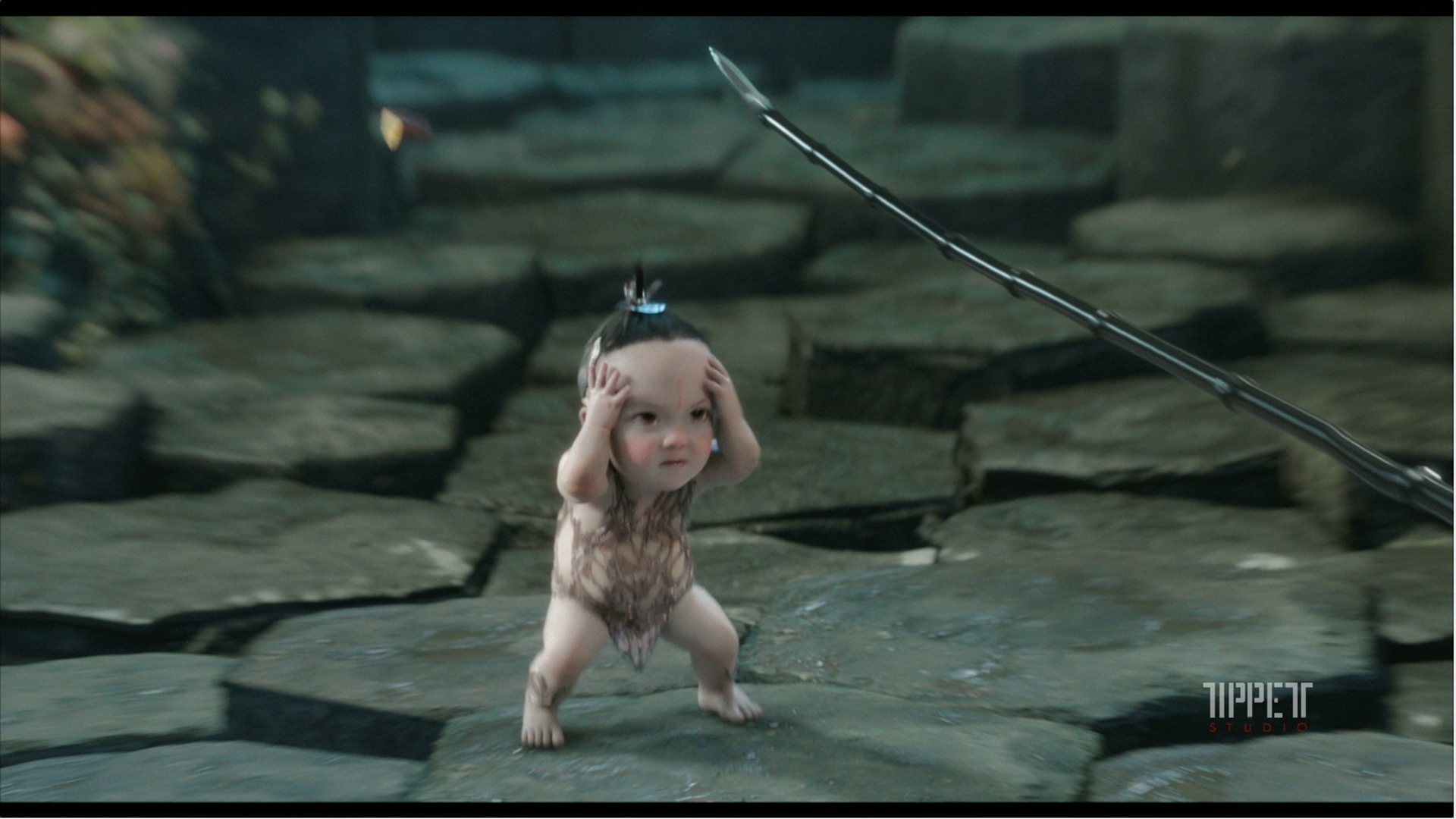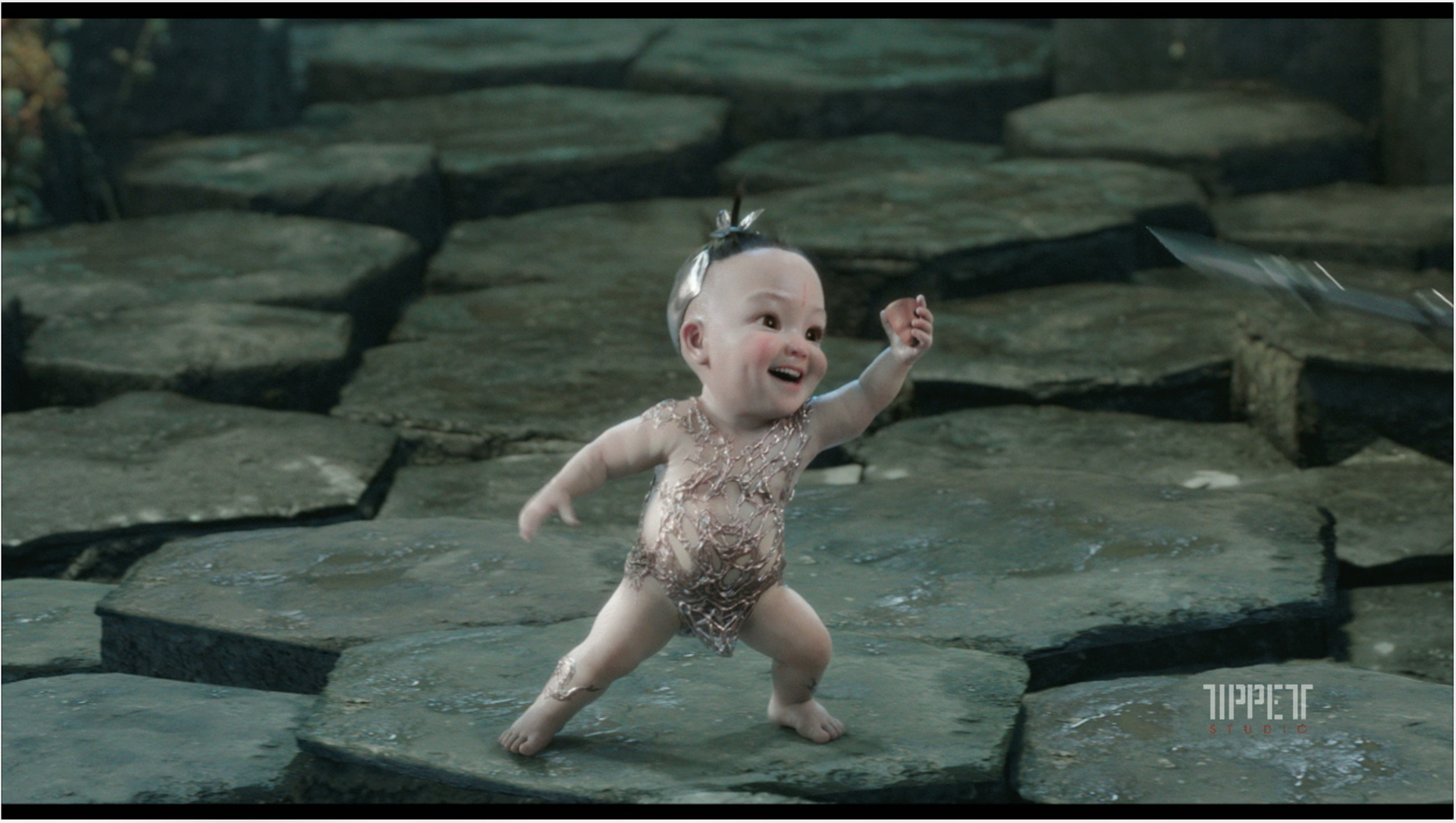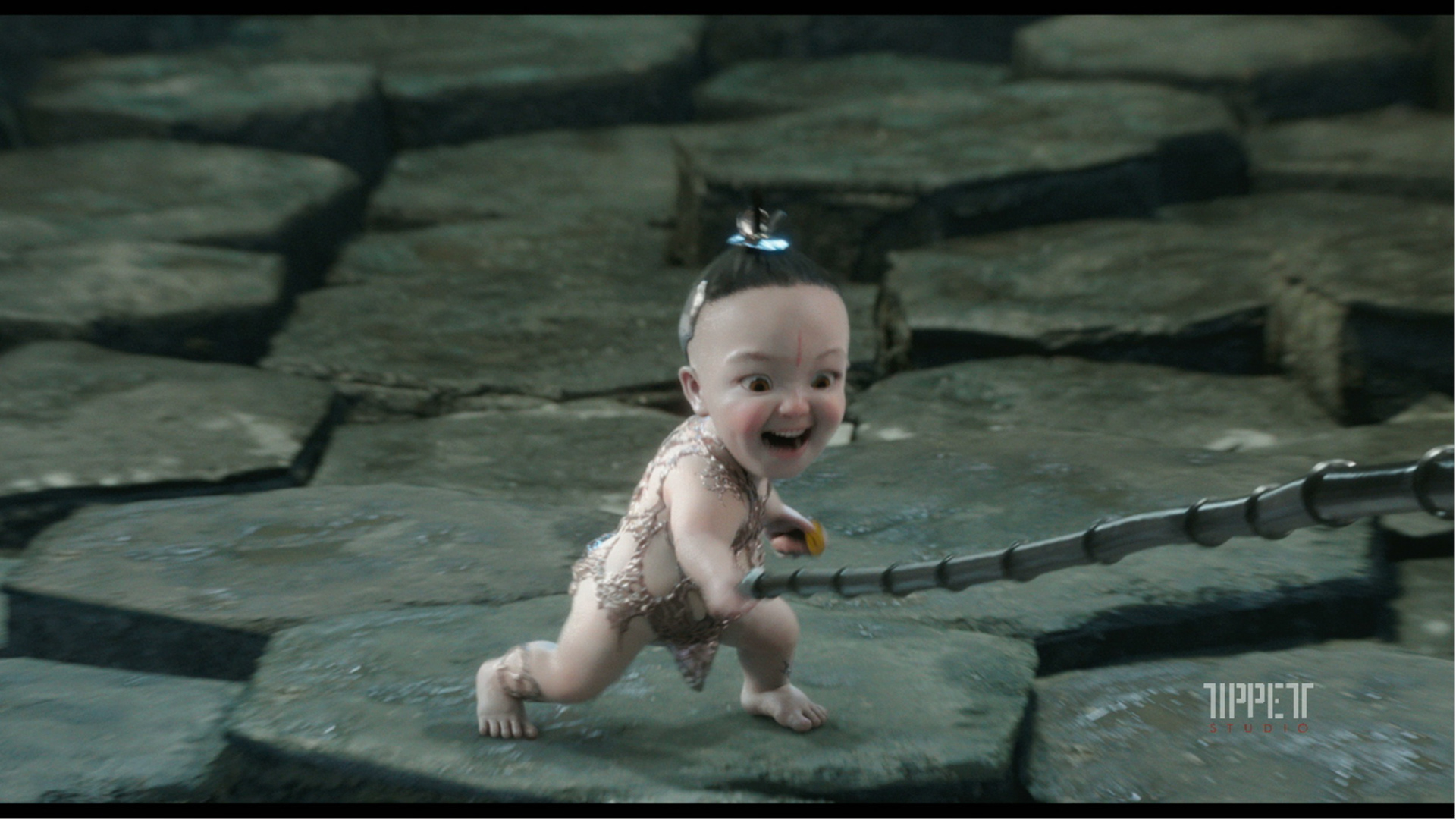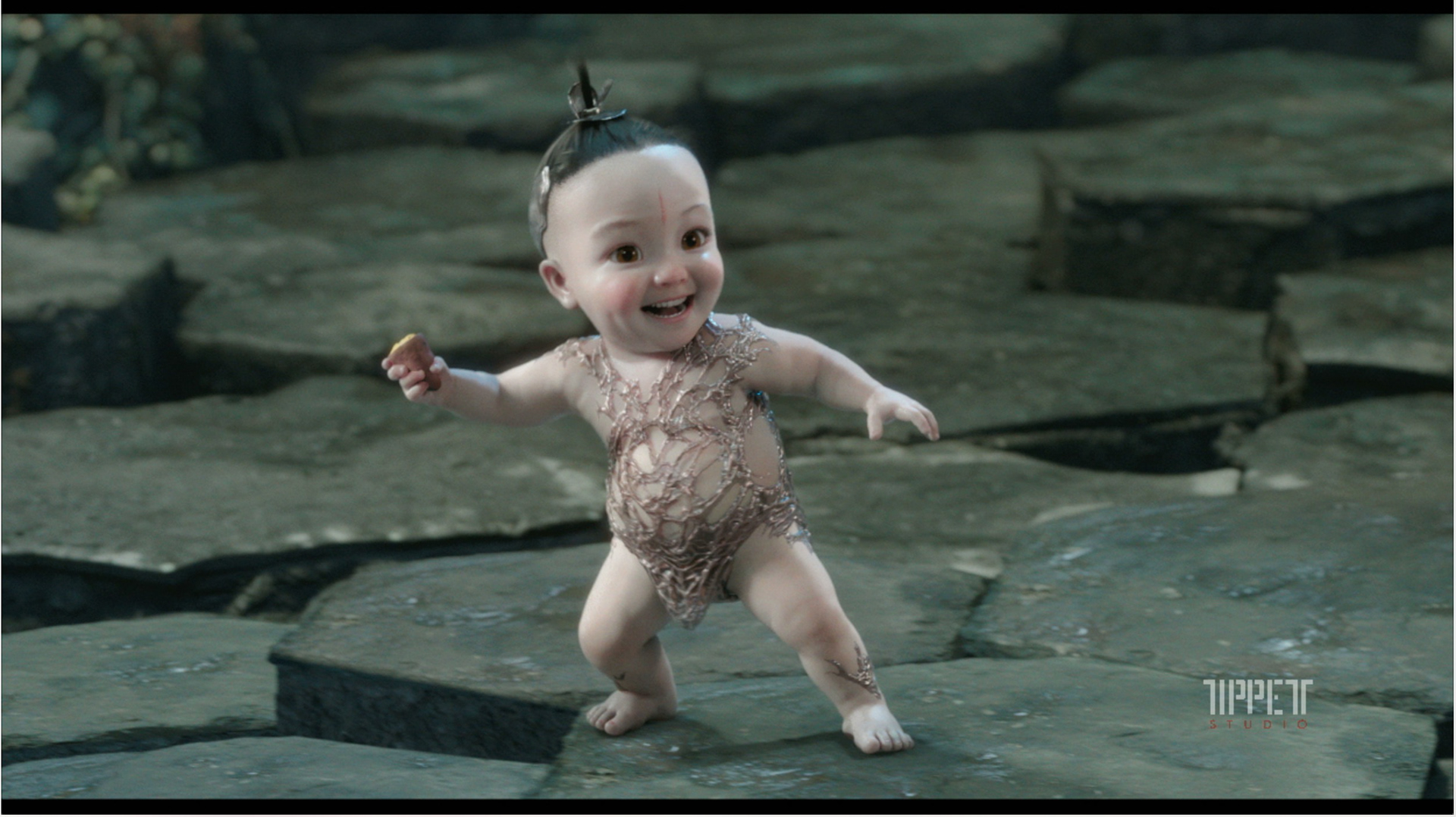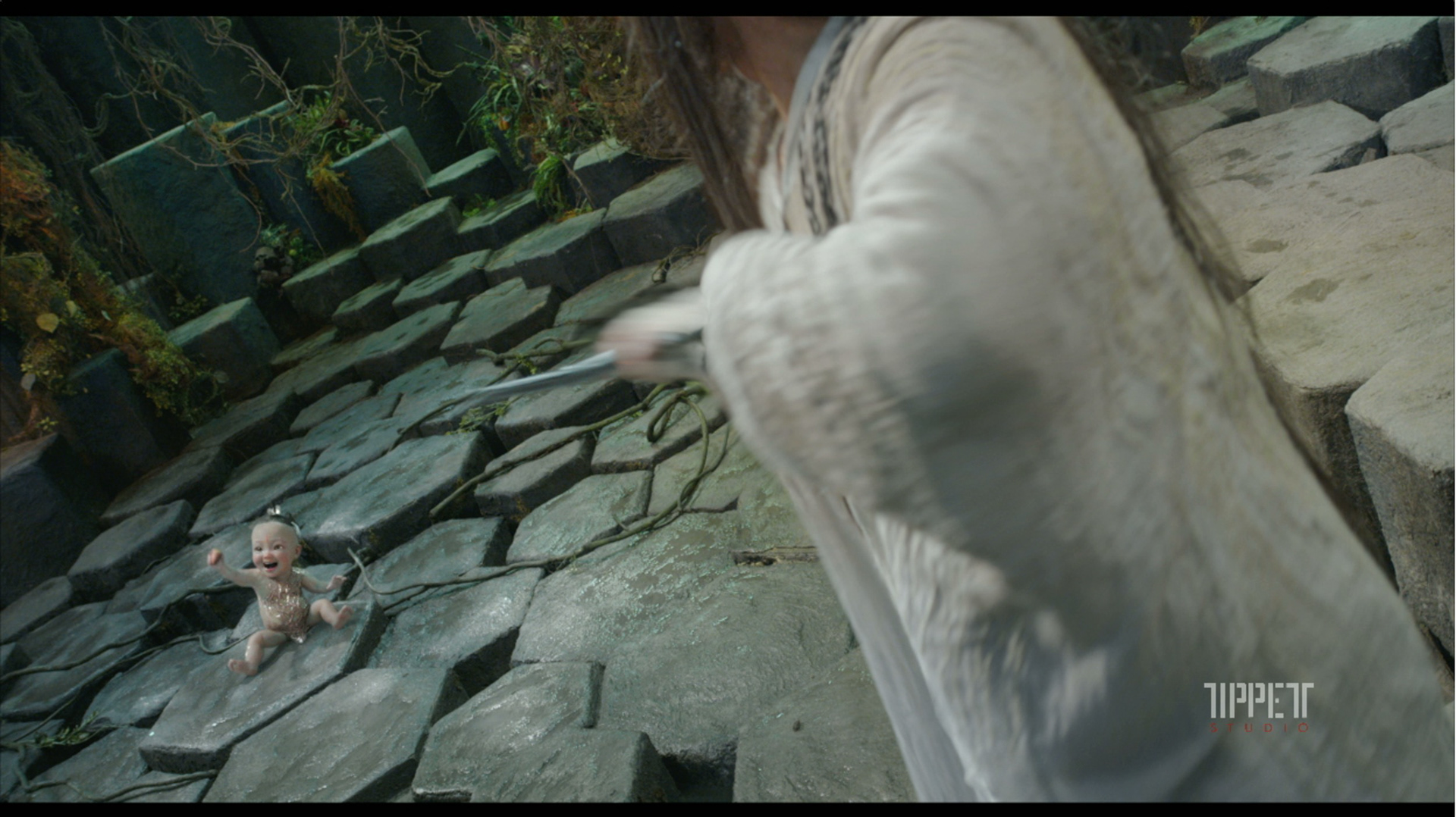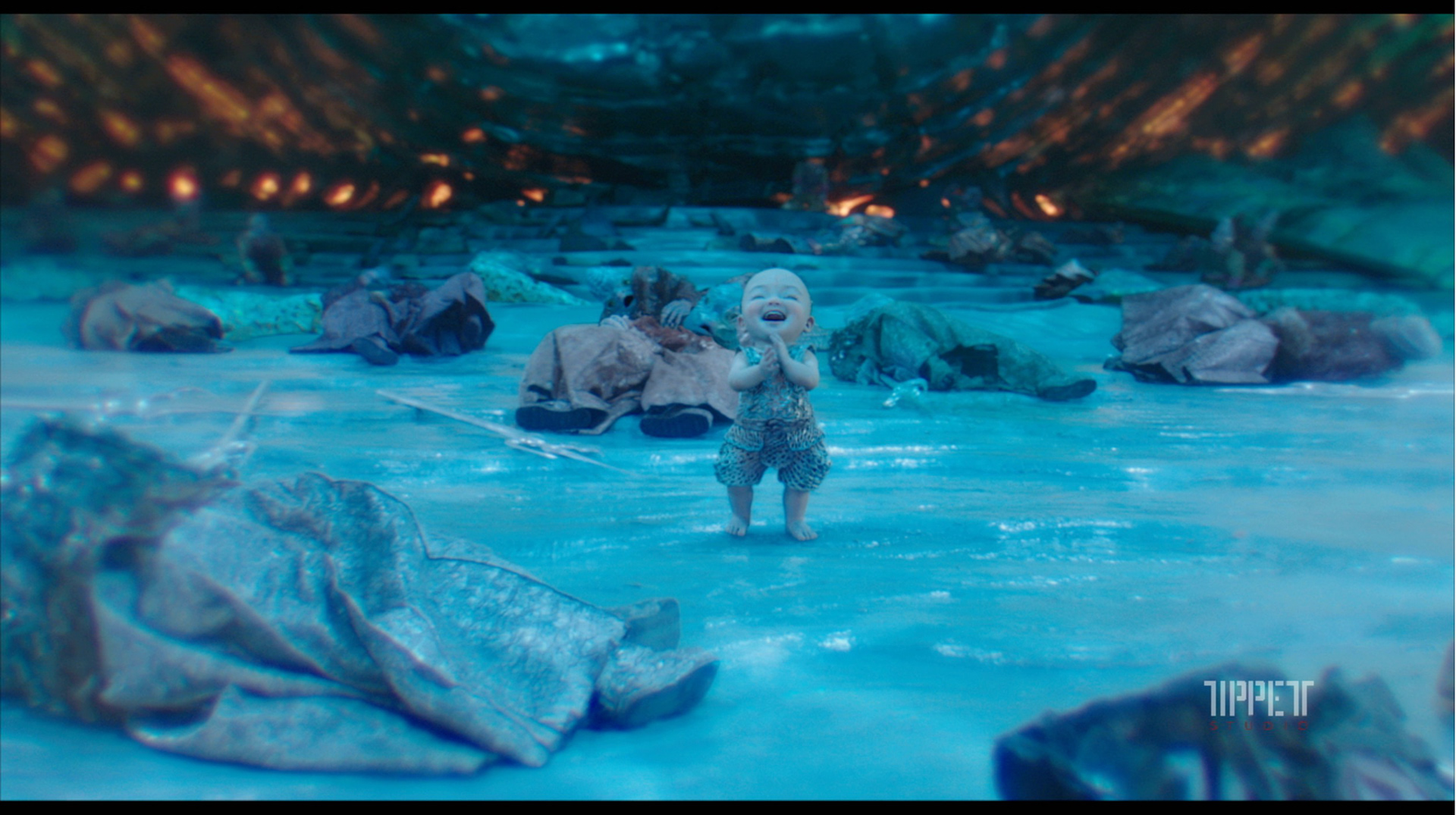League of Gods presented many challenges technically, aside from the sheer scope of creating hundreds of shots, most from scratch under a short schedule. Everything ranging from a photoreal baby character, to a gigantic earth destroying centipede, to full scale ocean environments complete with swirling maelstroms made it across our screens and through our render farm.
The Deep Maelstrom
This was the monster shot that I started the show with and was actually one of the very last shots to be finaled on the show. The shot is a 900 frame shot of a boat traveling along the surface of an ocean, viewed from ground level. The camera then cranes up and reveals several gigantic maelstroms swirling in the water as well as the illumination from an underwater city. The idea was to use Deep Compositing to integrate the maelstroms into the ocean without the need for holdout mattes. While this worked for some of the cases, it did not work for all. The result was a hybrid comp of 2d / 3d and Deep compositing techniques to make it all work. I developed a card based smoke tool that would use the Deep or Depth data to place arrays of cards along the ocean's surface. That data would also cut the cards properly to give the illusion of the waves occluding parts of the smoke as it went back in depth. The entire underwater city treatment was created in Nuke as well. 3D geometry and 2D art was used to created refractable imagery. Normals, deep and depth data was used to help dial in the final look of the underwater city.
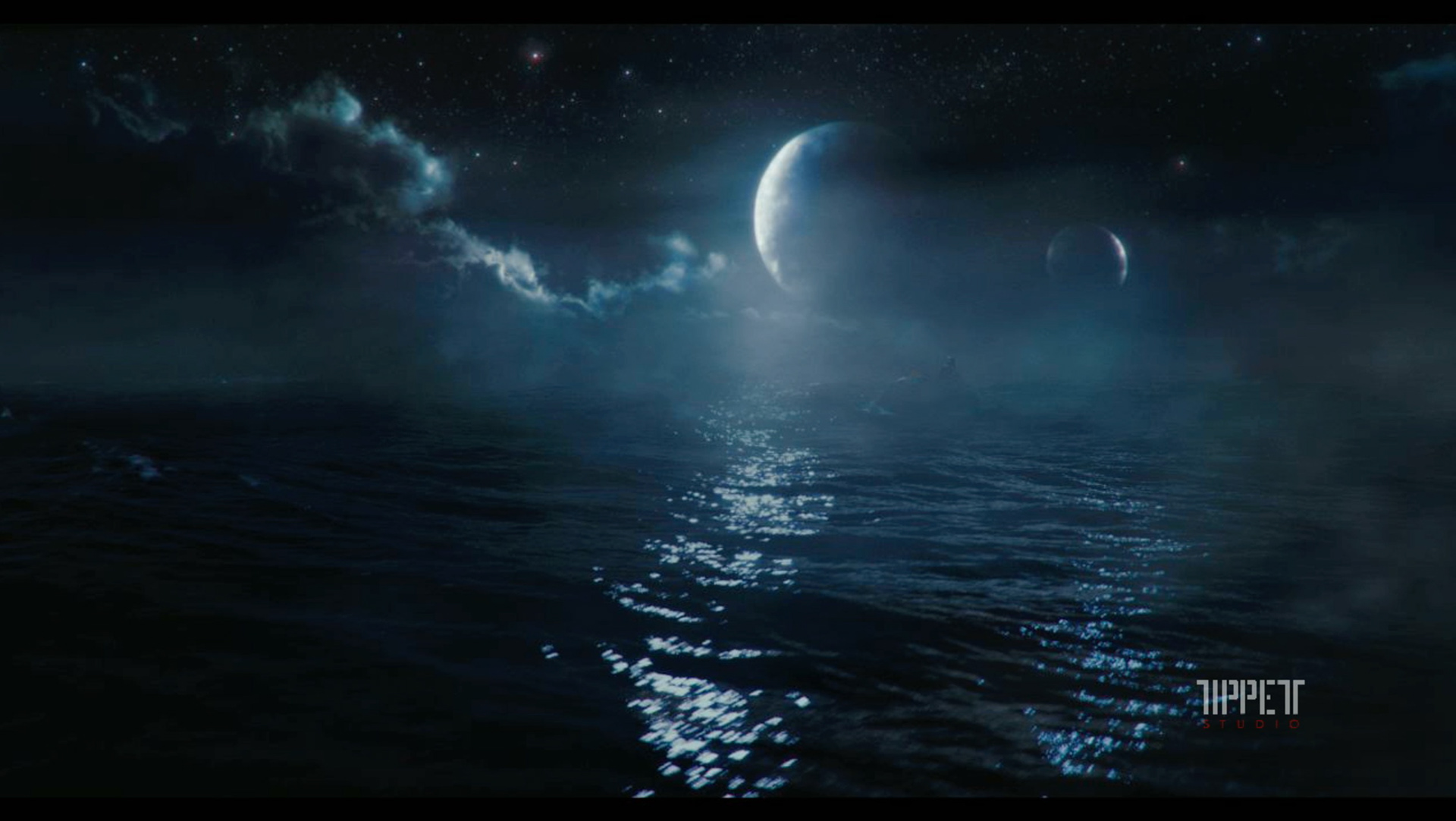

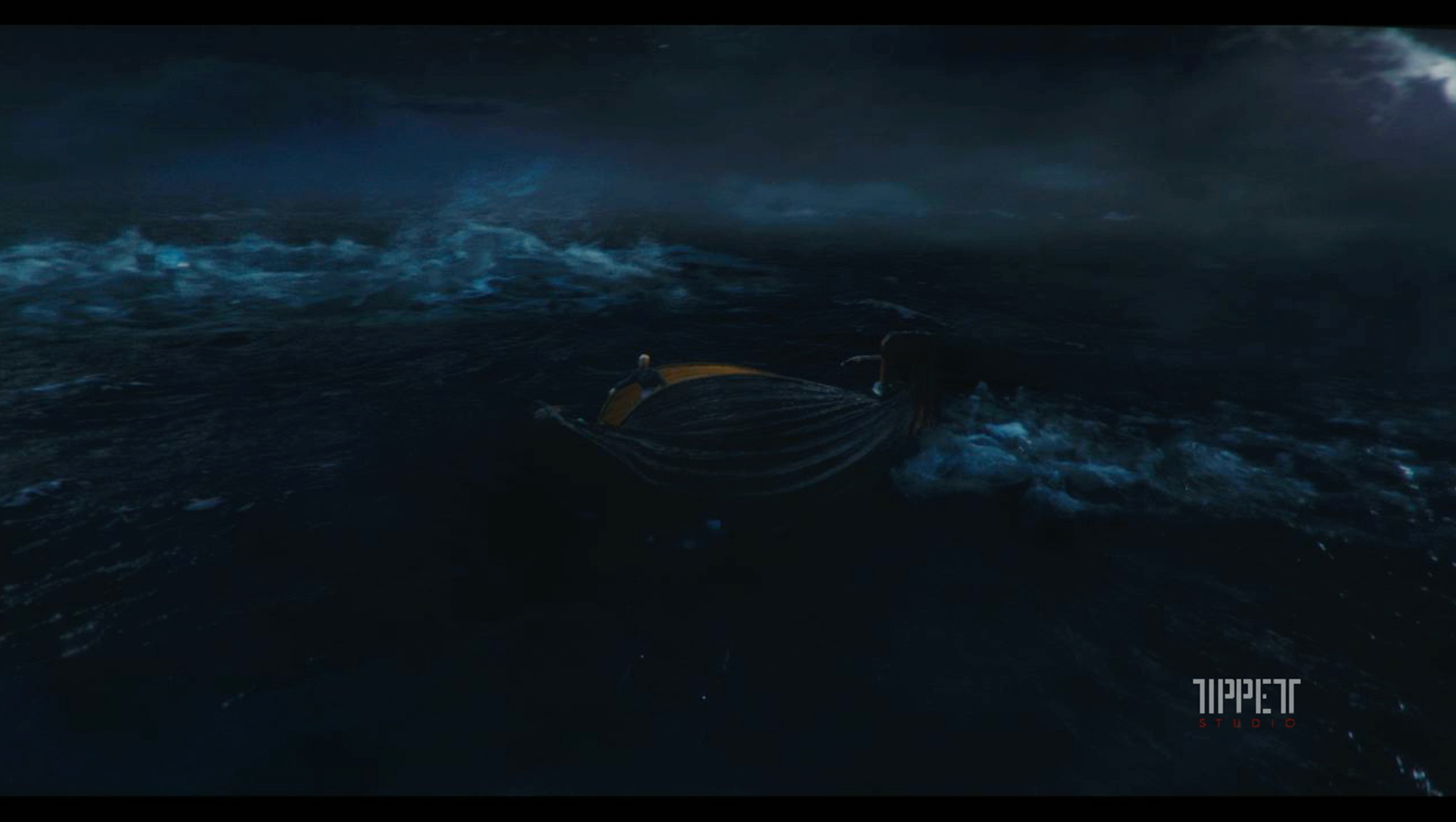
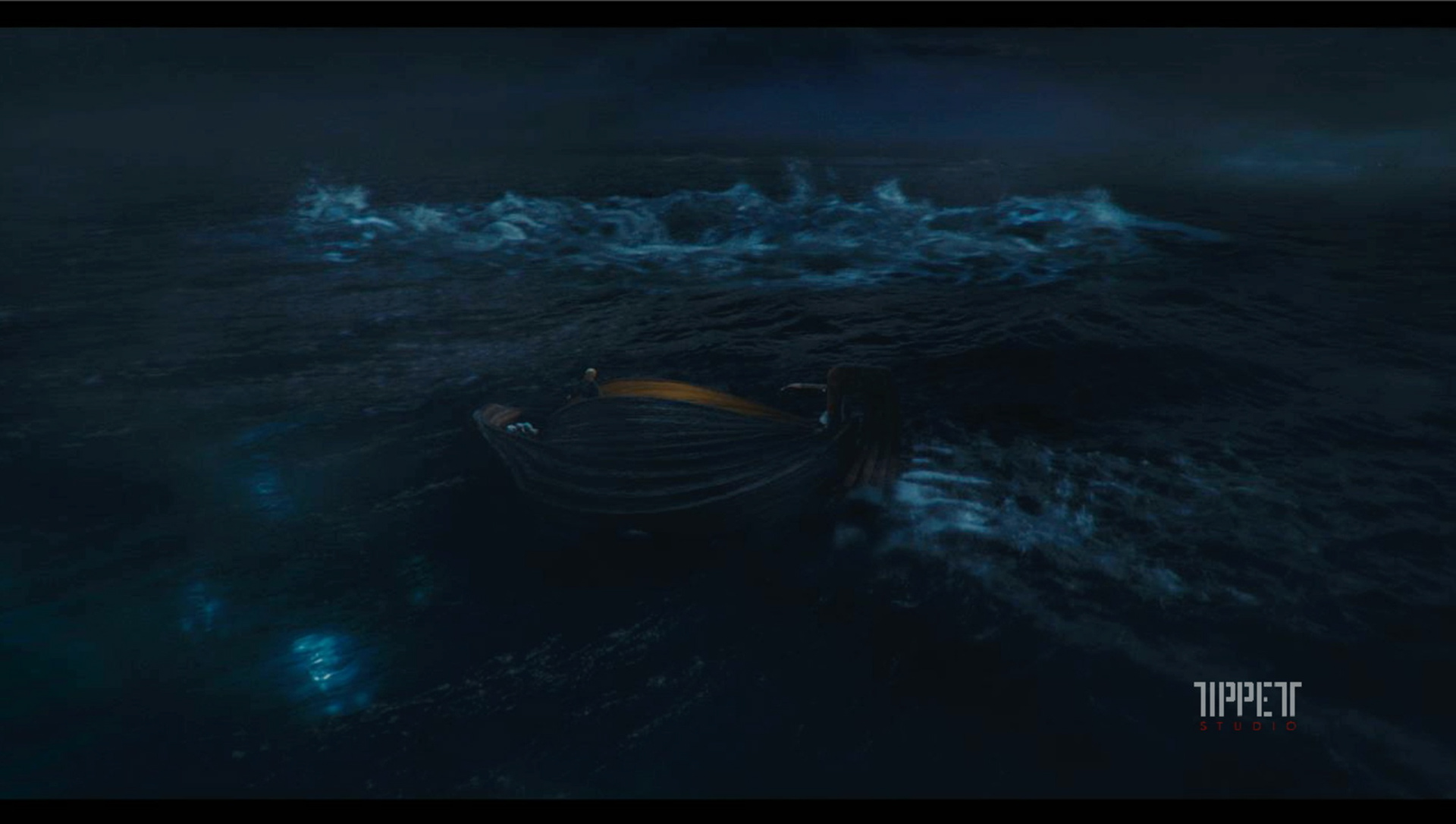
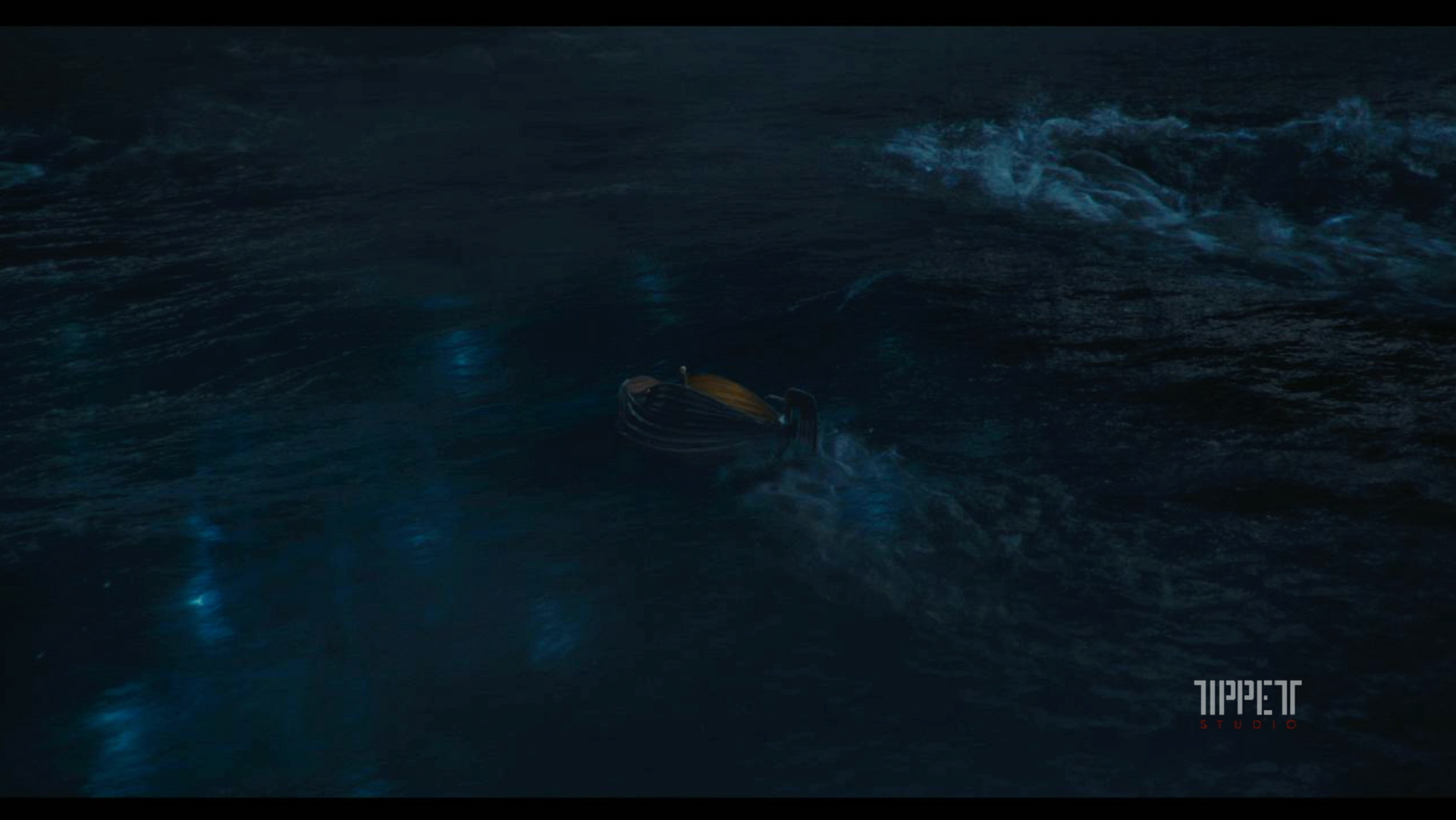

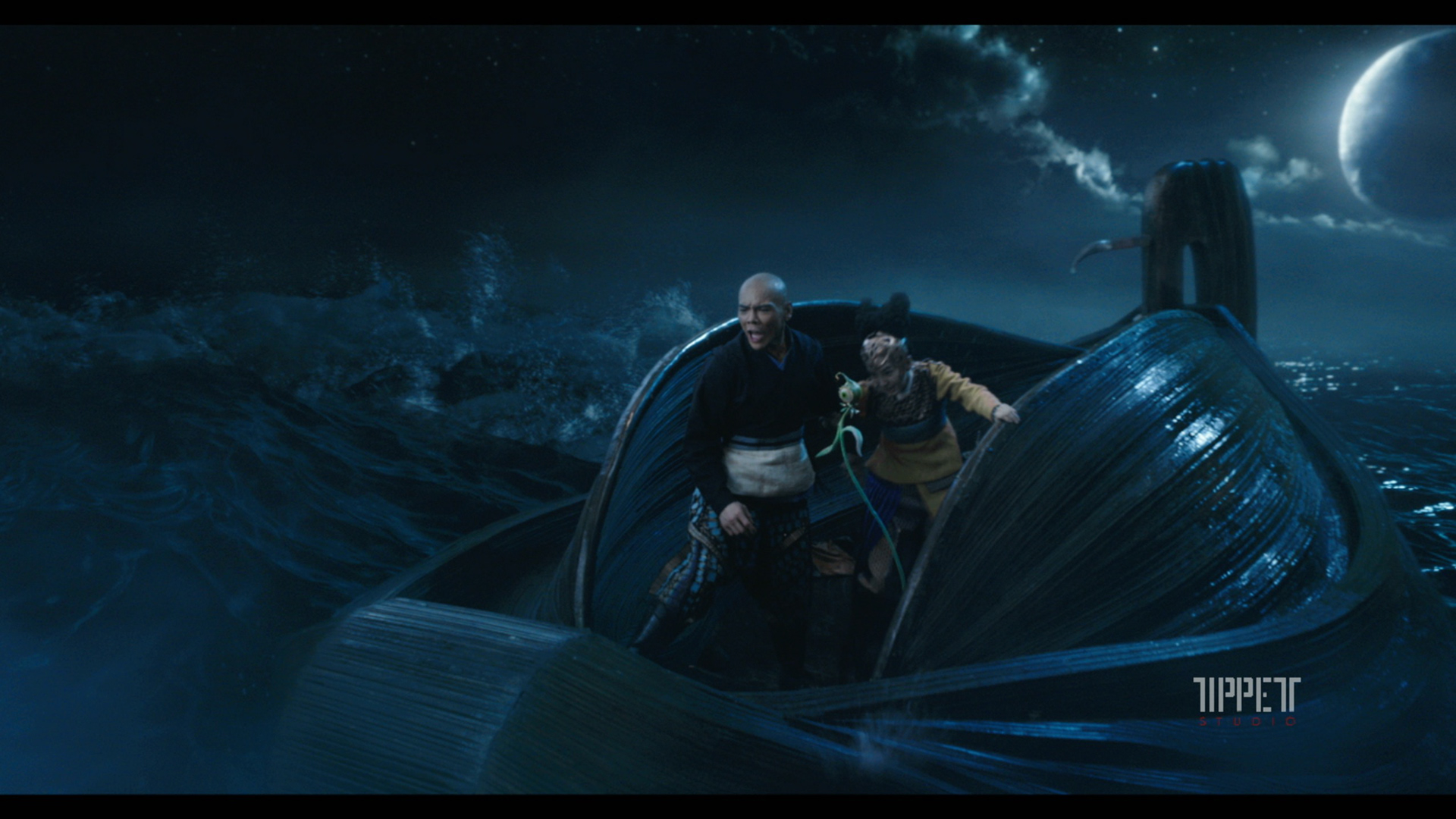
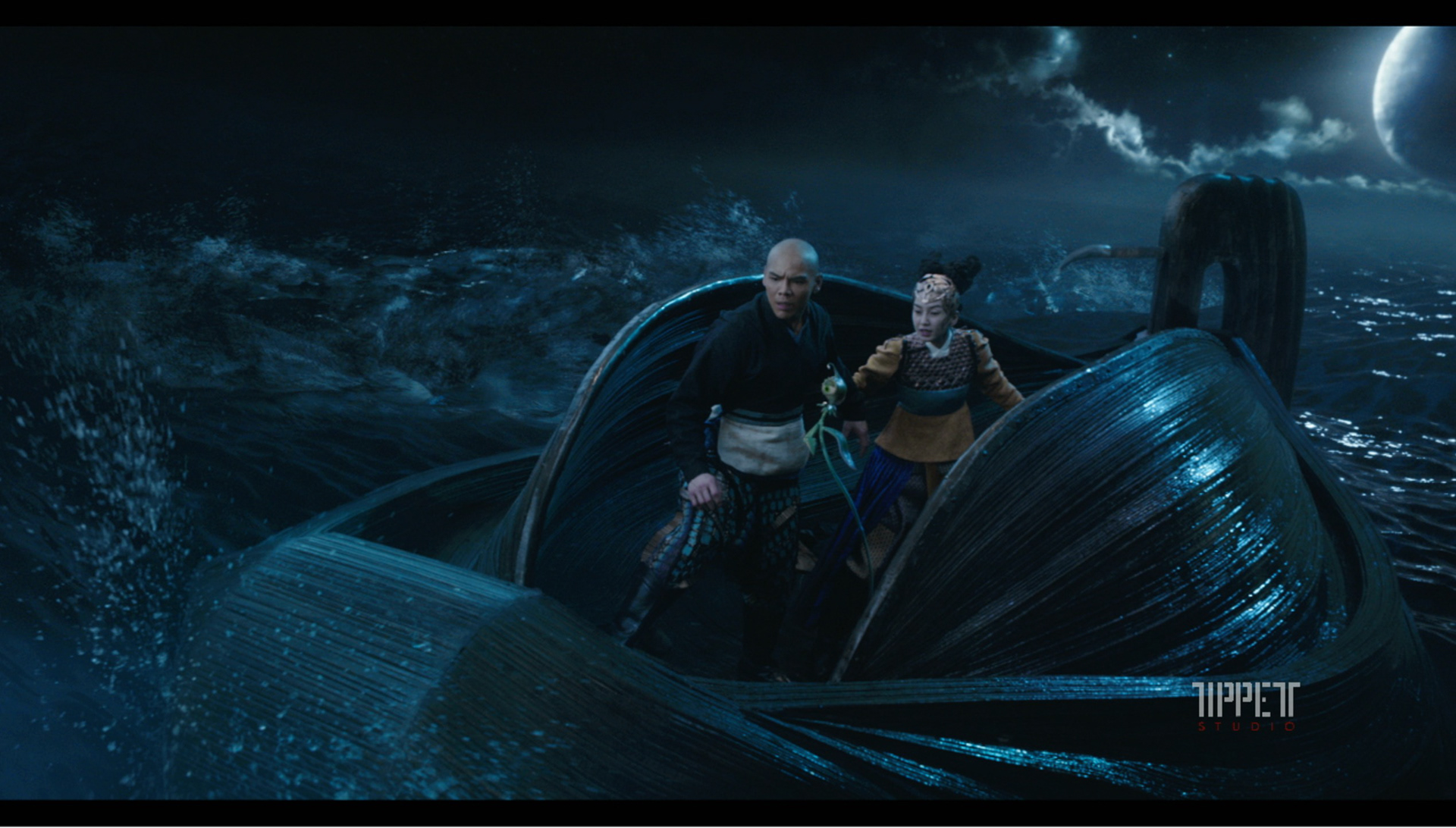
The Centipede
The 'Pede was actually done over the course of a couple weeks. Internally, it was one of the most impressive sequences we did on the film and really speaks volumes about the level of creature work that Tippett is able to do. The sequence involved a massive centipede that would burst in and out of the ground as it chased the characters from the film. A large portion of the atmospherics, dust and dirt were all shot practically and pulled from Tippett's massive archive of element footage. The plates were shot with aerial drones and required massive amounts of re-framing, color timing, time ramping, scaling, cropping and pretty much any other conforming method known to man to get this sequence to look like one cohesive piece. Plates were shot at various times of the day from different cameras on different days and all graded and matched to form a single environment for our creature to perform in. The bug was rendered and comped using Tippett Comp's standard creature nuke stacks and aov's to give us ultimate control over the final look of the bug. It was one of the most rewarding sequences to work on and provided much needed relief from all of the blues and cyans we had been seeing everyday for months on end.
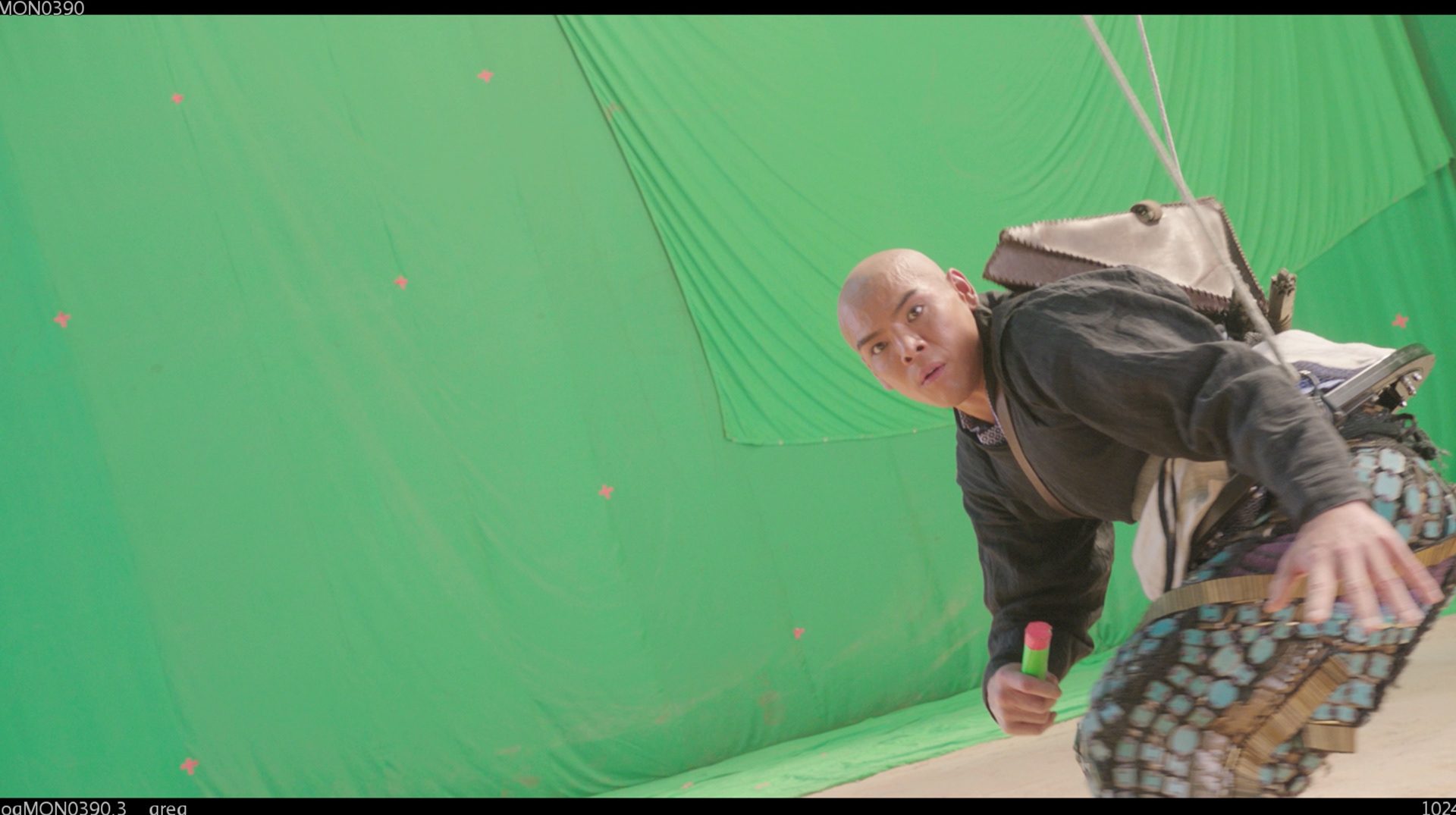
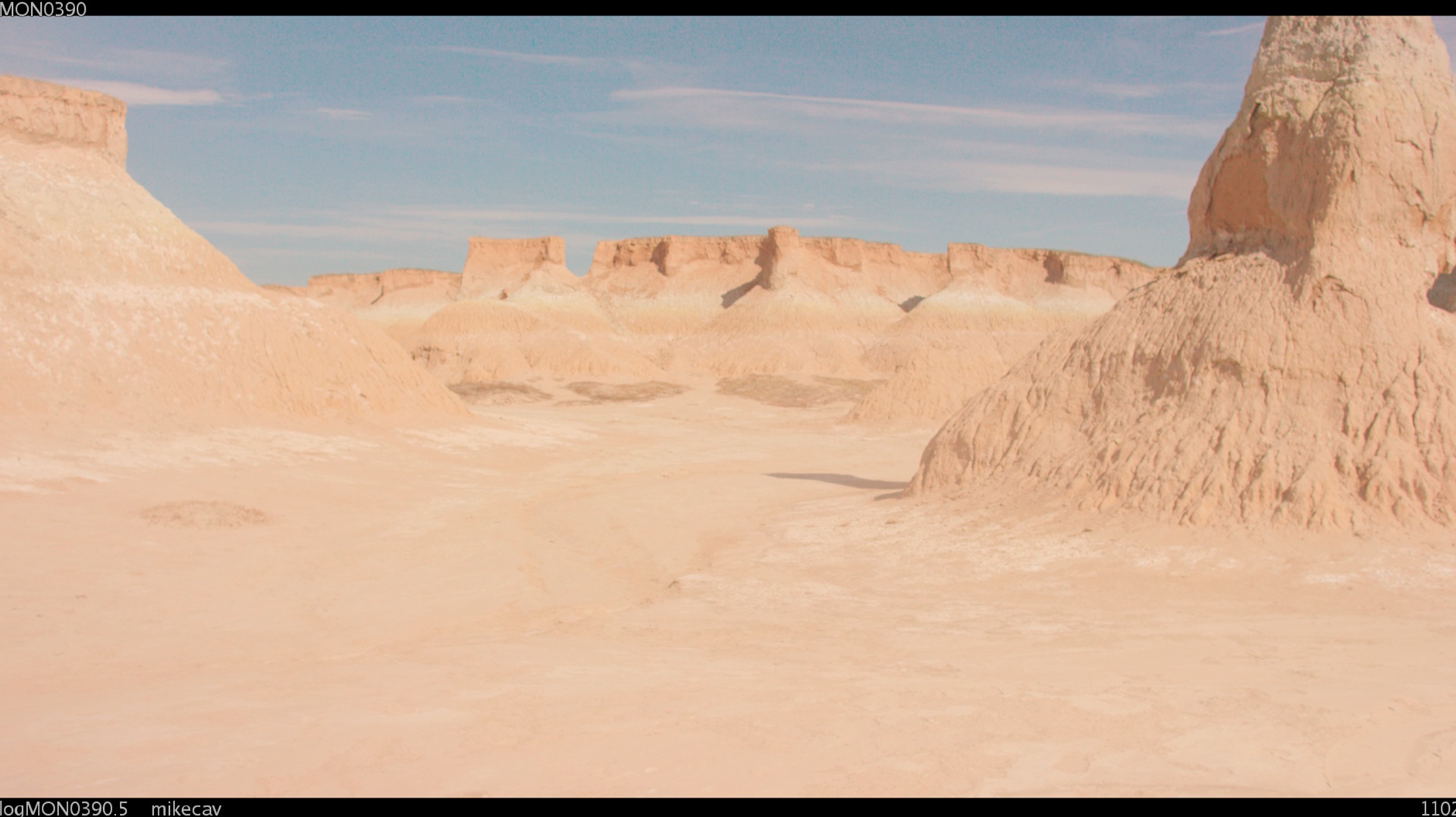
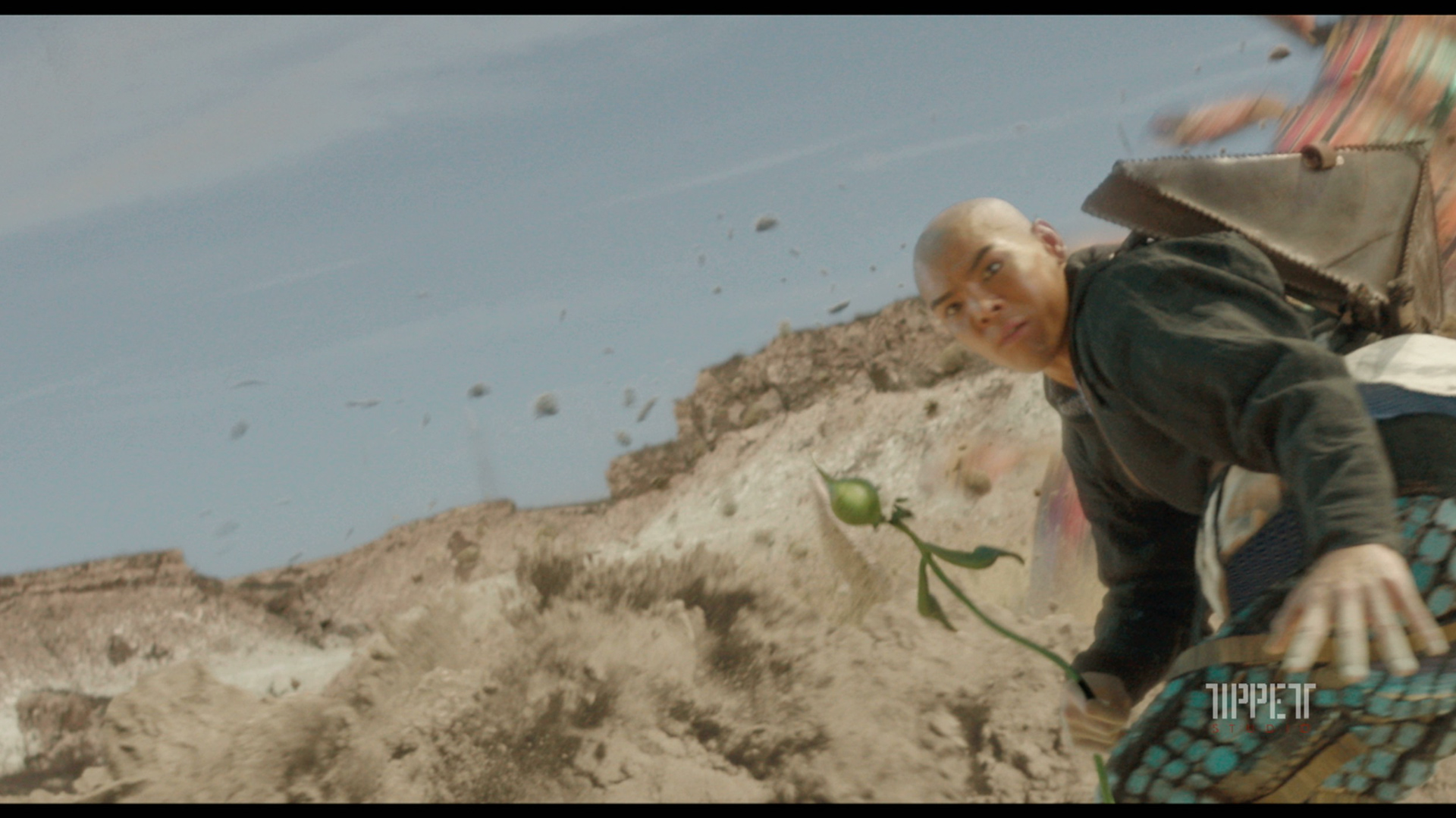

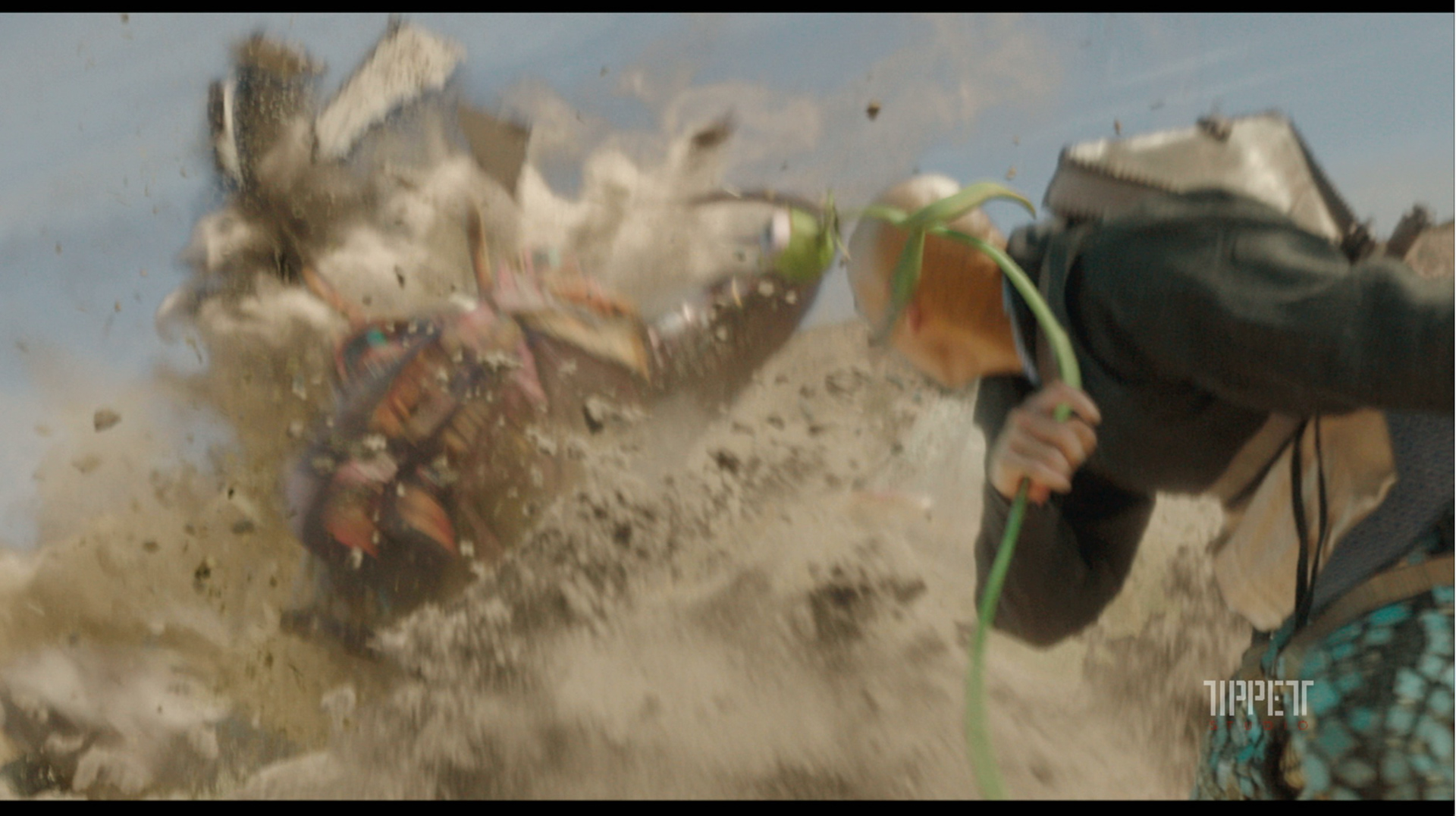
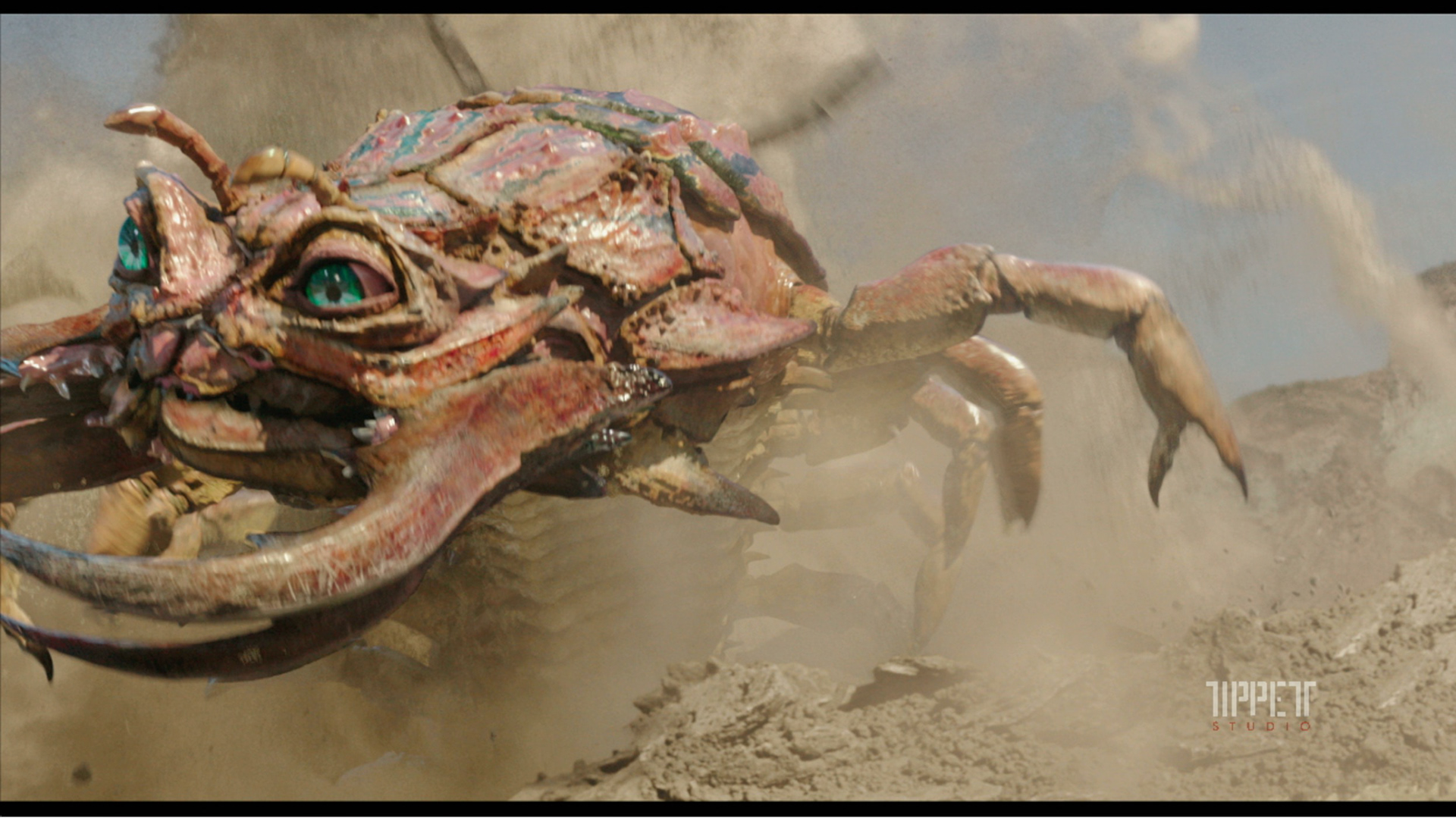


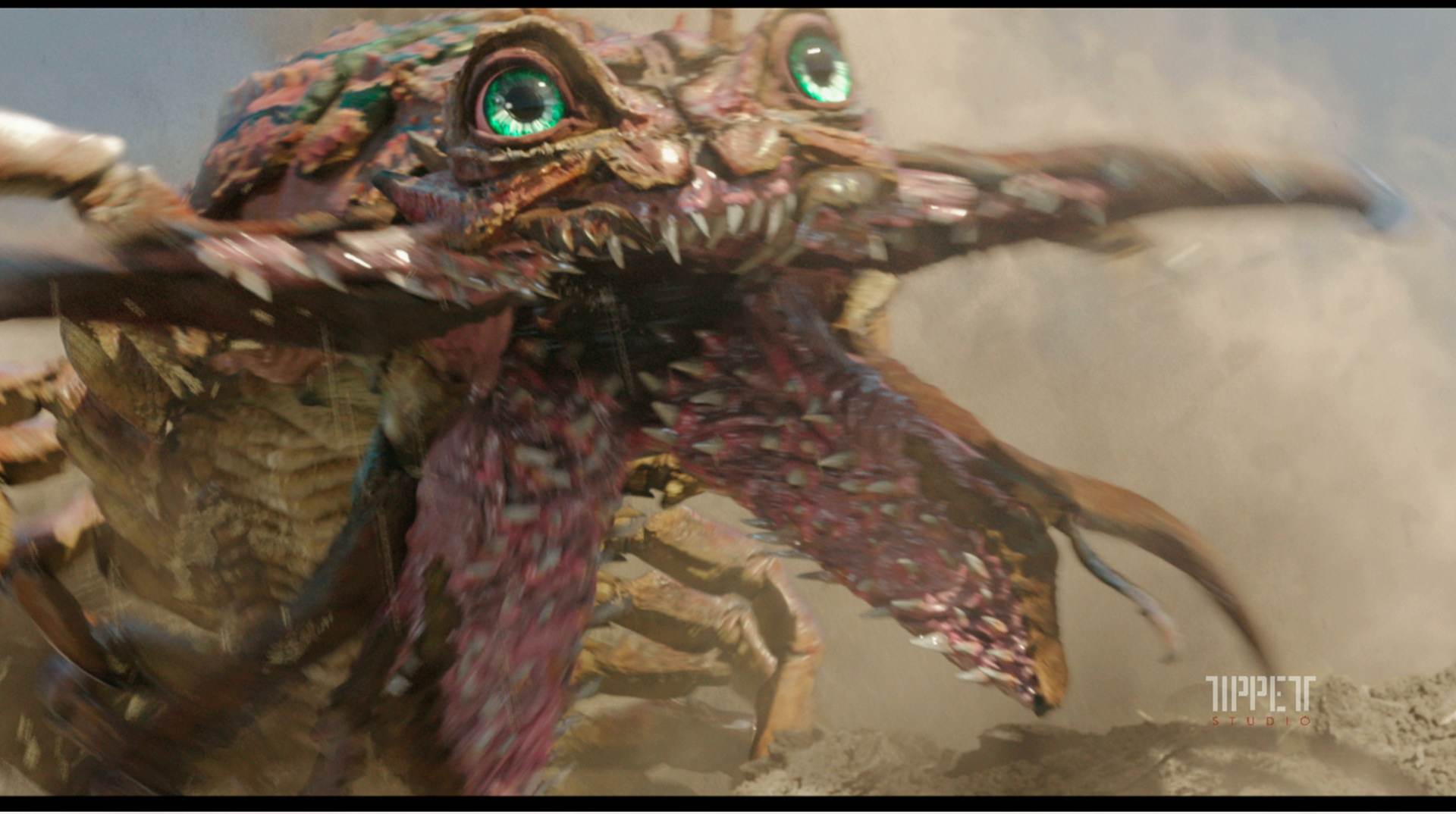

Baby Naza
We were tasked with creating a photo-real baby with exaggerated features and be capable of performing full martial arts moves while maintaining a realistic look. The Naza Nuke creature stacks were quite large with specific treatments happening to almost every part of the body to help dial him into the plate. Deep compositing was used to help with the holdouts as he bounced and flipped through the cg sets. There is a sequence where the baby uses his flatulence to fight off hordes of crabs and mermen soldiers. Once a look for the blast was dialed in, I created a rig that could be imported into each shot and helped place and animate the effect with a few sliders and knobs. The rig used Nuke's 3D data combined with Deep data correctly envelope the gas bubble around the enemies without the need for roto or specialized mattes.
